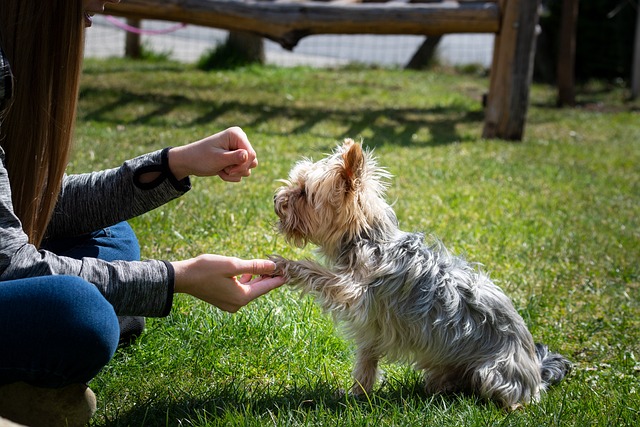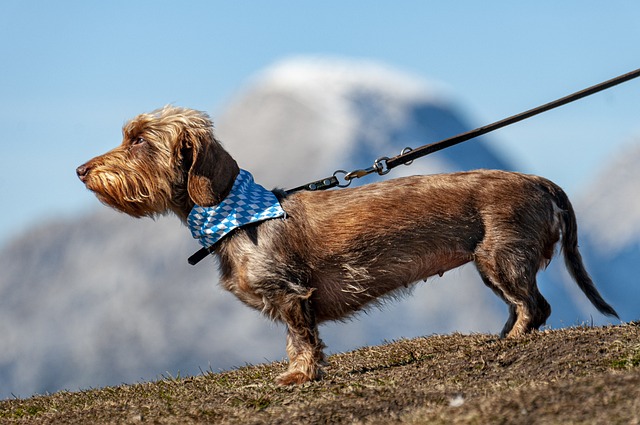If you are looking for a way to train your dog that is effective, humane, and fun, you might want to consider positive reinforcement dog training. This is a dog training method that focuses on rewarding good behavior rather than punishing bad behavior¹. In this blog post, we will explain what positive reinforcement dog training is, why it works, and how to do it.
What is positive reinforcement dog training?
Positive reinforcement dog training is a technique that uses praise and rewards to change your dog’s behavior². The reward could be a treat, a toy, a game, or anything your dog finds rewarding. The goal of positive reinforcement is to make your dog associate good things with certain behaviors, like sitting when asked, so they repeat those behaviors automatically.
Positive reinforcement dog training is based on the scientific principle of operant conditioning, which states that behaviors that are followed by positive consequences are more likely to be repeated, while behaviors that are followed by negative consequences are less likely to be repeated⁴. By using positive reinforcement, you are teaching your dog what you want them to do, rather than what you don’t want them to do.
Why does positive reinforcement dog training work?
Positive reinforcement dog training works because it taps into your dog’s natural motivation to seek rewards. Dogs are driven by rewards, not by fear or pain³. By rewarding your dog for good behavior, you are strengthening the bond between you and your dog, and making training a positive and enjoyable experience for both of you.
Positive reinforcement dog training also works because it helps your dog learn faster and more reliably. When your dog is rewarded for doing something right, they are more likely to remember it and do it again. When your dog is punished for doing something wrong, they are more likely to be confused, scared, or resentful, and less likely to learn from their mistakes.
Positive reinforcement dog training also works because it improves your dog’s confidence and well-being. When your dog is praised and rewarded for their achievements, they feel good about themselves and their abilities. When your dog is scolded or hurt for their failures, they feel bad about itself and their relationship with you. Positive reinforcement dog training helps your dog develop a positive self-image and a trusting relationship with you, which can prevent or reduce behavioral problems such as aggression, anxiety, or fearfulness².
How to do positive reinforcement dog training?
Positive reinforcement dog training is easy to do, but it requires some patience, consistency, and creativity. Here are some basic steps to follow:
- Choose a reward that your dog loves. It could be a small piece of food, a favorite toy, or a game of tug. Make sure the reward is something your dog will work for, and that you can deliver quickly and frequently.
- Choose a cue that signals your dog what you want them to do. It could be a word, a hand signal, or a clicker. Make sure the cue is clear, distinct, and consistent.
- Teach your dog the behavior you want them to perform. You can use different methods, such as luring, shaping, or capturing, to help your dog learn the behavior. Luring involves using a reward to guide your dog into the desired position, such as holding a treat above its nose to make them sit. Shaping involves rewarding your dog for small steps that lead to the final behavior. For example, rewarding your dog for lifting its paw, then for touching your hand, then for shaking your hand. Capturing involves rewarding your dog for doing the behavior naturally, such as rewarding your dog for lying down when they are relaxed.
- As soon as your dog makes a behavior, mark it with the cue. As a result, your dog will be able to associate the cue with the reward and the behavior. For example, as soon as your dog sits, say “sit” and give them a treat. Or, as soon as your dog lies down, click and give them a toy.
- Repeat the process until your dog understands the cue. Gradually increase the difficulty by adding distractions, distance, or duration to the behavior. For example, ask your dog to sit when there are other dogs around when you are a few feet away, or for a few seconds longer. Never punish your dog for failure, but reward him for success. If your dog makes a mistake, simply ignore it and try again.
- Keep training sessions short, fun, and varied. You can train your dog anywhere, anytime, as long as you have a reward and a cue. You can also train your dog in different behaviors, such as tricks, manners, or skills, to keep them interested and challenged. The more you train your dog, the more they will learn and the stronger your bond will be.
Some tips for positive reinforcement dog training
- Use a high-pitched, cheerful voice to praise your dog. This will make them feel happy and excited.
- Use a low-pitched, firm voice to give your dog commands. This will make them pay attention and respect you.
- Use a neutral, calm voice to correct your dog. This will make them understand that they did something wrong, but not fear you.
- Use small, bite-sized rewards that your dog can eat quickly. This will prevent them from getting full or distracted.
- Use different rewards to keep your dog motivated. You can vary the type, amount, or frequency of the reward, or use a jackpot reward for exceptional performance.
- Use a clicker to mark the exact moment your dog does the behavior. This will make the learning process faster and clearer.
- Use hand signals to communicate with your dog. This will make training more visual and effective.
- Use positive reinforcement to teach your dog what to do, not what to do. For example, instead of scolding your dog for jumping on people, teach them to sit when they greet someone.
- Use positive reinforcement to prevent or solve behavioral problems. For example, instead of yelling at your dog for barking, teach them to be quiet on cue, or give them a toy to keep them busy.
Conclusion
Positive reinforcement dog training is a great way to train your dog that is beneficial for both of you. It will help your dog learn new behaviors, improve their confidence and well-being, and strengthen your bond. It will also make training fun and rewarding for you and your dog. Try it today and see the difference it can make.




